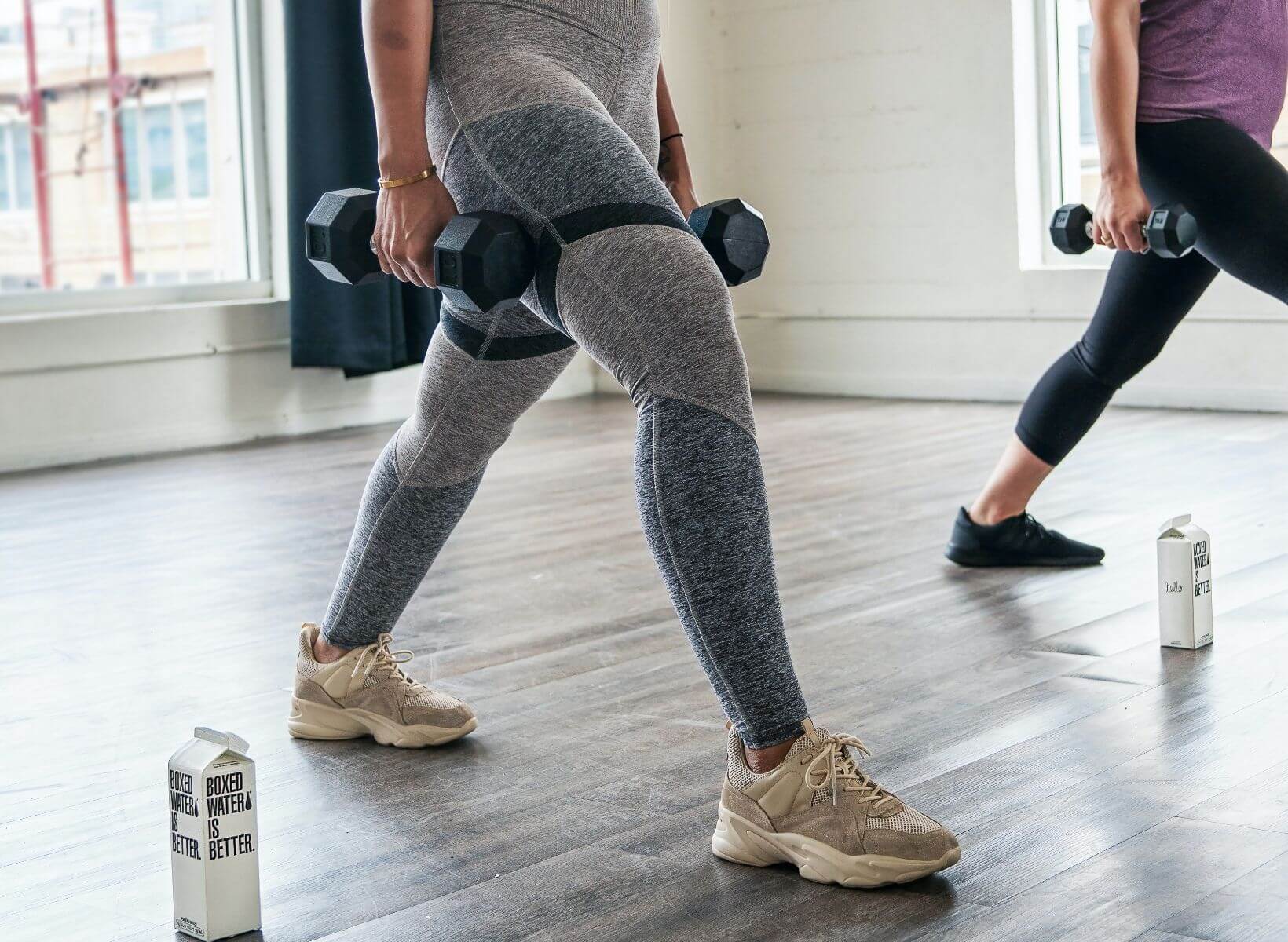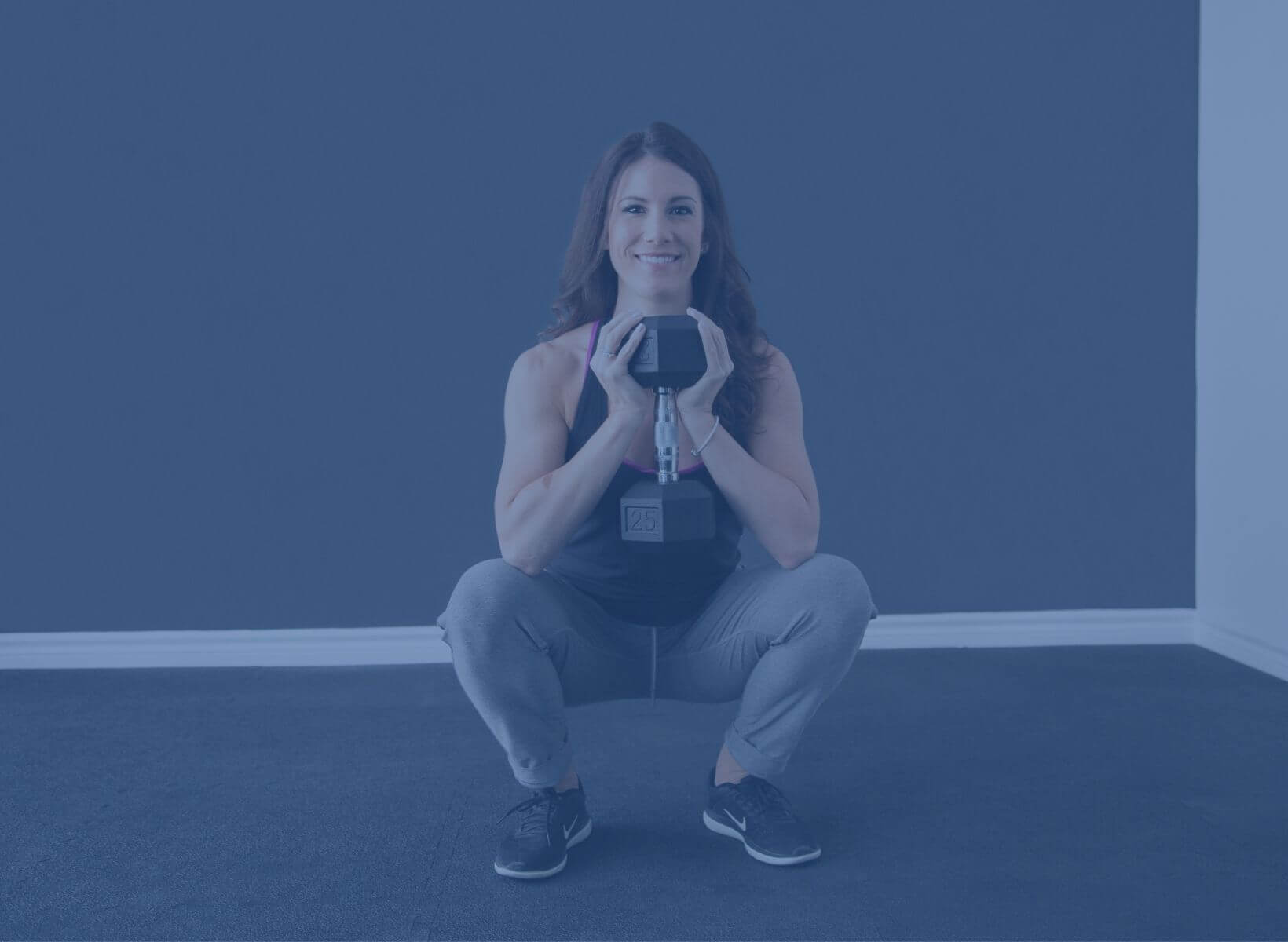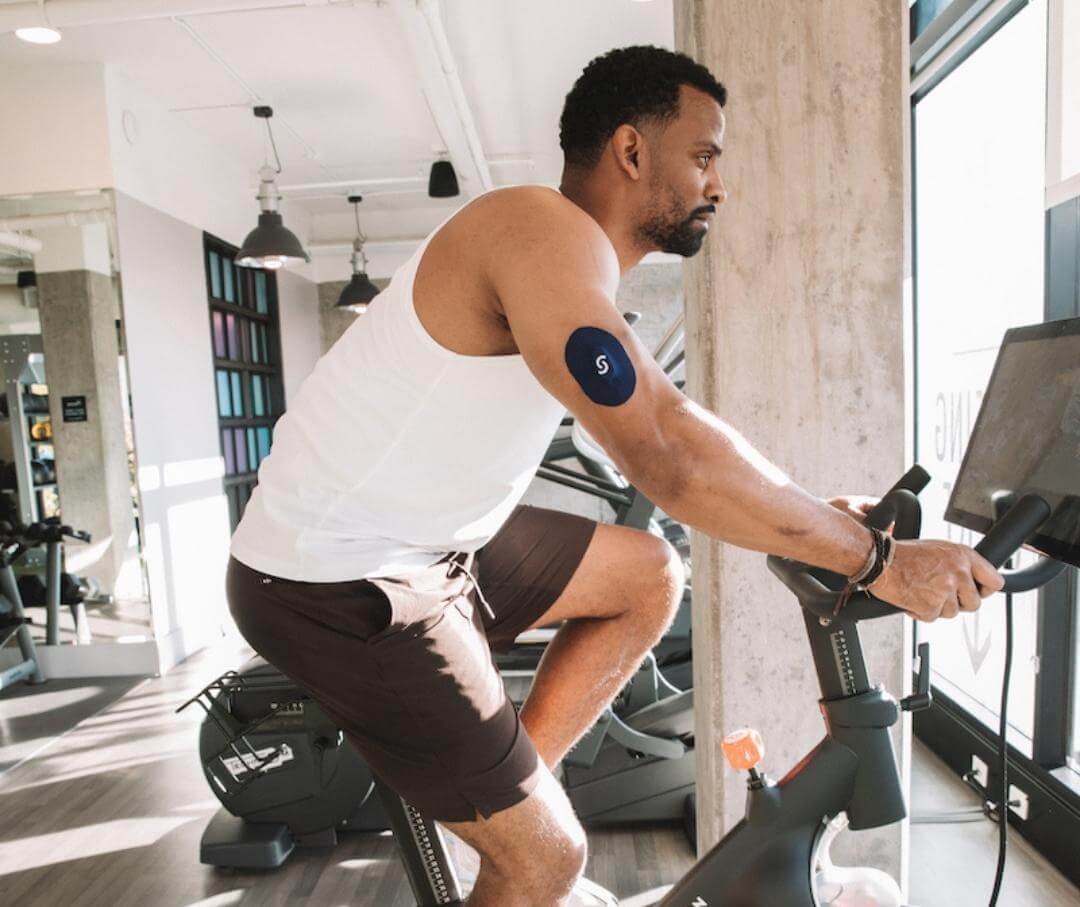When you have limited time available to work out, you want to choose the most efficient and effective type of exercise to reach your goals, right? That’s where metabolic workouts—or metabolic training—come into play.
In this article, we'll cover:
- Your metabolism
- The basics of metabolic workouts
- Pros and cons of metabolic workouts
- The difference between metabolic workouts and HIIT
- Metabolic workouts and blood sugar spikes
- A sample metabolic workout plan to get you started.
Your metabolism
Metabolism refers to all of the chemical reactions that occur in the body to maintain itself—like breathing, blood circulation, digesting food, growing and repairing cells, regulating body temperature and even managing hormone levels <sup>1</sup>. And metabolism is also the process of acquiring, transporting, using and disposing of nutrients in the body. Basically, this is how your body runs.
There is also a term called “exercise metabolism”, which refers to how energy is transformed through the physiological changes and demands placed on the body during exercise. This is how your body runs when you work out.
In order for the body to perform exercise (such as a bicep curl or a burpee or a long run), the body needs fuel, which it gets through food. Food is then converted into smaller and usable substrates, such as carbohydrates, proteins and fats (also known as macronutrients).
ATP
One molecule that’s very important to know in energy metabolism is called adenosine triphosphate or ATP. ATP is essentially a source for use and storage of energy in the body. When the bonds of ATP are broken, energy is transferred. And, in order to fuel your workouts and complete muscle contractions, you have to use ATP<sup>2</sup>.
The intensity of your workout will decide the rate of ATP production and consumption, and there are three main pathways in the body that can generate ATP, including:
- The ATP-PC system (immediate energy) - used for high-intensity exercise
- The glycolytic system (short-term energy) - used for medium-intensity exercise
- The oxidative or aerobic system (long-term energy) - used for low-intensity exercise
Depending on the intensity and length of your workout, you’ll be one of these ways of creating ATP in your body. The goal of metabolic workouts is to use the medium- and short-term energy pathways to get optimal results.
And now we’re ready to get into the basics of metabolic workouts.
What are metabolic workouts?
“To put it simply, metabolic conditioning workouts are periods of intense work alternated with periods of rest – either structured or unstructured,” says Paige Kumpf, ACE certified personal trainer.
Metabolic workouts (which can also be called metabolic conditioning or “MetCon”) are a way of working at a medium- to high-intensity to take advantage of immediate and after-exercise benefits, to boost your metabolism.
“These workouts will improve the conditioning of the cardiovascular system to be able to handle higher and more intense bouts of work with relatively less fatigue,” Kumpf says. “When it comes to fat loss, it's a good way to burn a fairly high amount of calories in a short amount of time.”
Uses your entire body to increase workout efficiency
Often, this includes compound exercises that work multiple muscle groups at the same time. And, most importantly, you’ll be doing a lot of work in a short amount of time, with specifically programmed short periods of rest. The exact duration of the movement and the rest can be different depending on the workout you are doing. But common work-to-rest ratios are 1:1, 2:1, and 3:1.
Challenges your body to use specific energy pathways
Because two of the energy pathways (immediate and short-term) lead to excess post-exercise oxygen consumption, or EPOC, and that’s when the body’s oxygen consumption remains elevated after a tough workout. During this time, the metabolism is also elevated and you keep burning calories and fat <sup>3</sup>. This is also known as the after-burn period.
You spend less time to get the same results
Exercise is all about the effort. In fact, it’s the effort, rather than the time spent, that gets the results. Instead of spending one hour doing steady-state exercise, metabolic training can be short and focused, with peaks and valleys of work, designed to give you a big bang for your buck. These workouts can range from just 10 minutes to 30 or 35 minutes.
In fact, one study of healthy college-aged women and men, found that both longer endurance cycling sessions and short and intense interval-based cycling sessions resulted in an equal increase in skeletal muscle oxidative capacity<sup>4</sup>.
If you’re always putting off your workout because you just don’t have time for it, then give metabolic workouts a try!
Benefits of metabolic workouts
There are plenty of reasons why you’d want to try metabolic workouts. For instance …
- They are efficient. Minimal time, for maximum results. Metabolic workouts are usually on the shorter side, think 15 to 35 minutes, so you don’t have to spend all day at the gym.
- They burn big calories during the workout. Because you will get your heart-rate up significantly and challenge your body, you will ultimately get a big calorie burn, which can lead to losing weight.
- They burn calories after the workout. Metabolic workouts bring on EPOC, or excess post-exercise oxygen consumption, and that’s when the body’s oxygen consumption remains elevated after a tough workout, and you burn more calories and fat even when you are done moving.
- They improve your cardiovascular abilities and build your muscles at the same time. One of the best things about metabolic workouts is that they often combine both beneficial cardiorespiratory training and resistance (or strength) training into one workout. With one short session, you are not only improving your aerobic capacity, but you are also increasing your lean muscle mass with strength efforts.
Downsides of metabolic workouts?
There are also some reasons why you’d want to limit or steer clear of metabolic workouts:
- They are not for every fitness level. If you’re a beginner, if you’re injured, or if you’re dealing with a physical handicap, you may not be able to complete metabolic workouts.
- They are hard. If you’re having trouble finding motivation to work out, it’s not going to be easy to jump into tough workouts that you know will be hard to get through. This can be a hindrance and make some people not want to perform metabolic workouts.
- They shouldn’t be done every day. Because metabolic workouts are often full body and very difficult, they aren’t the type of exercise you’d want to do every single day. You could risk overuse injuries or wear your body down from this repeated movement over and over again. In fact, overtraining can even lead to a depressed immune system, elevated heart-rate and decreased performance<sup>5</sup>. That’s why, it’s best to take a day off of exercise or do something lighter or less intense in between these sessions, rather than complete metabolic workouts every single day.
What does a metabolic workout consist of?
The most important aspects of metabolic workouts are: duration, intensity and rest periods. There are some common moves that you'll often find in metabolic workout plans.
Here’s what to expect in a metabolic workout:
- Full-body movements, giving you a cardio and strength benefit.
- Compound movements, where you are working more than one muscle group at the same time (like a mountain climber, as opposed to a calf raise).
- Moves that require you to get your heart rate up significantly, followed by a short rest period.
A good metabolic workout would include:
- Short warm-up—to fire up your muscles and get your body ready for movement
- Intervals of work—to get your heart rate up
- Rest — anywhere from 15 to maybe 35 minutes
- Cool down—stretching to end your session
{{mid-cta}}
What exercises are best for boosting metabolism?
The best exercises for boosting metabolism are full-body compound moves that require multiple muscle groups to work at the same time.
One of the best exercises for interval-based exercise—like metabolic workouts—is the kettlebell swing. While the kettlebell is considered more of an advanced modality, the kettlebell swing is a full-body move that can be easily taught and done safely. In fact, in one study of fourteen participants found that the use of the kettlebell swing may safely and effectively provide better multi-faceted exercise adaptations in a short period of time, when compared to traditional strength and resistance training<sup>6</sup>.
Here are some additional exercises you can include in a metabolic workout to support boosting your metabolic rate:
- Burpees
- Mountain climbers
- Squat thrusts
- Renegade rows
- Switch lunge jumps
- Speed skaters
- Sprinting
- Pull-ups
- Push-ups
- And of course, kettlebell swings
According to trainer Kumpf, it’s a good idea to stick with exercises that elicit the least amount of potential muscular and/or mechanical damage.
“A couple of my favorites are the airdyne bike or the prowler sled. However, any exercise that has a high output, like sprints or even leg presses or walking lunges could be used, when done safely,” says Kumpf. “One exercise that shouldn’t be done for the purpose of conditioning is the box jump. This is an advanced, explosive and easy-to-mess-up movement that should be used only when training for power or to specifically improve one's vertical jump.”
Related reading: In addition to exercises, there are other ways to naturally boost your metabolism.
How are metabolic workouts different from HIIT or (high-intensity interval training)?
The terms “metabolic workouts” and “HIIT” are often used interchangeably, but there are subtle differences between the two.
HIIT, or high-intensity interval training, refers to working near the maximum target heart rate for short amounts of time to failure, with rest in between. While HIIT workouts are metabolic workouts, not all metabolic workouts have to fall under the HIIT category.
The term HIIT might be intimidating, but it’s best to remember that you can complete metabolic training or metabolic conditioning without taking it to the “HIIT” level of effort.
If you’re ready to jump into HIIT and need some inspiration and also want to get the benefits of metabolic conditioning, try this 10-minute HIIT session from Signos.
How often should you include metabolic workouts in your routine?
In order to avoid overuse injuries and give your body plenty of rest, you want to do one to three metabolic workouts a week, with a day of rest of lighter activity in-between.
A great workout schedule might look like this:
- Monday: Full-body metabolic workout
- Tuesday: Yoga
- Wednesday: Full-body metabolic workout
- Thursday: Light jog or power walk
- Friday: Full-body metabolic workout
- Saturday: Light jog or power walk
- Sunday: Rest
How do metabolic workouts help lower your blood sugar spikes?
In general, most exercise, including metabolic workouts, can help to lower blood-sugar spikes.
Based on one study of 11 men comparing intermittent exercise throughout the day found brief intermittent exercise throughout the day was more helpful in lowering glucose spikes around breakfast<sup>7</sup>. This study also confirmed that regular exercise is a key to lowering blood sugar spikes overall.
<p class="pro-tip"><strong>Learn more about </strong> <a href="/blog/blood-sugar-metabolic-health">the link between metabolic health and blood sugar</a>.</p>
Try this 25-minute metabolic conditioning workout
5-minute warm-up
- Marching in place - 30 seconds
- Light jog in place - 30 seconds
- Arms swing backward and forward - 1 minute
- Half-range bodyweight squats - 30 seconds
- Half-range lateral lunges alternating - 30 seconds
- Inchworm walk-outs - 1 minute
- Light jog in place - 1 minute
15-minute workout
- Kettlebell swings - 45 seconds
- 15 seconds rest
- Reverse lunges (holding dumbbells or bodyweight) - 45 seconds
- 15 seconds rest
- Push-ups - 45 seconds
- 15 seconds rest
- Speed skaters (holding dumbbell or bodyweight) - 45 seconds
- 15 seconds rest
- Cross-under mountain climbers - 45 seconds
- 15 seconds rest
Repeat this circuit for a total of three times through.
5-minute cool-down
- Light marching in place - 30 seconds
- Standing quad stretch right - hold 30 seconds
- Standing quad stretch left - hold 30 seconds
- Standing shoulder across-the-body stretch right - hold 30 seconds
- Standing shoulder across-the-body stretch left - hold 30 seconds
- Forward fold hamstring stretch - hold 30 seconds
- Seated crossover glute stretch right - hold 30 seconds
- Seated crossover glute stretch left - hold 30 seconds
- Upward dog - hold 30 seconds
- Child’s pose - hold 30 seconds
Done!
<p class="pro-tip"><strong>Learn more about </strong> <a href="/blog/metabolic-advantages-of-cardio">how aerobic exercise can improve metabolic health</a>.</p>
Key takeaways on metabolic workouts
Metabolic workouts are efficient—Metabolic workouts can be a great tool in your healthy lifestyle toolbox to save time and get fit using medium- to high-intensity efforts with minimal rest. But they do not have to be your only tool in your toolbox.
Metabolic workouts offer a change of pace—If you feel like you’re stuck in your current fitness routine, then short and intense metabolic workouts might be right for you
Eating well is important too—In order to lose weight and reach your health and fitness goals, focus on regular movement (N-E-A-T) and eating nutrient-dense foods.
Listen to your body!—Proceed with caution and listen to your body. We would also suggest that you enlist the help of a certified personal trainer to guide you in perfecting your form and giving you a baseline fitness assessment before you get going.
The best exercise is the one you'll add to your routine—Any exercise you are most willing to include in your routine and actually complete is the best type of exercise for you.
Stay moving, and consider checking out more fitness resources for inspiration and wellness insight.
<p class="pro-tip">Read next: Should you exercise before or after eating breakfast?</p>
- Item 1
- Item 2
- item 3
Topics discussed in this article:
References
- Metabolism: What It Is, How It Works and Disorders. (n.d.). Cleveland Clinic. Retrieved March 21, 2022, from https://my.clevelandclinic.org/health/body/21893-metabolism
- Dunn J, Grider MH. Physiology, Adenosine Triphosphate. [Updated 2022 Feb 17]. In: StatPearls [Internet]. Treasure Island (FL): StatPearls Publishing; 2022 Jan-. Available from: https://www.ncbi.nlm.nih.gov/books/NBK553175/
- Lecovin, G. (n.d.). (EPOC) Exploring Excess Post-Exercise Oxygen Consumption. NASM. Retrieved March 21, 2022, from https://blog.nasm.org/excess-post-exercise-oxygen-consumption
- Gibala, Martin J.; McGee, Sean L. Metabolic Adaptations to Short-term High-Intensity Interval Training, Exercise and Sport Sciences Reviews: April 2008 - Volume 36 - Issue 2 - p 58-63 doi: 10.1097/JES.0b013e318168ec1f
- McCall, P. (2014, September 29). 6 Types of Metabolic Damage Caused by High-intensity Workouts. ACE. Retrieved March 21, 2022, from https://www.acefitness.org/education-and-resources/professional/expert-articles/5037/6-types-of-metabolic-damage-caused-by-high-intensity-workouts/
- Fortner, H. A., Salgado, J. M., Holmstrup, A. M., & Holmstrup, M. E. (2014). Cardiovascular and Metabolic Demads of the Kettlebell Swing using Tabata Interval versus a Traditional Resistance Protocol. International journal of exercise science, 7(3), 179–185.
- Hatamoto, Y., Goya, R., Yamada, Y., Yoshimura, E., Nishimura, S., Higaki, Y., & Tanaka, H. (2017). Effect of exercise timing on elevated postprandial glucose levels. Journal of Applied Physiology, 123(2), 278–284. https://doi.org/10.1152/japplphysiol.00608.2016
































